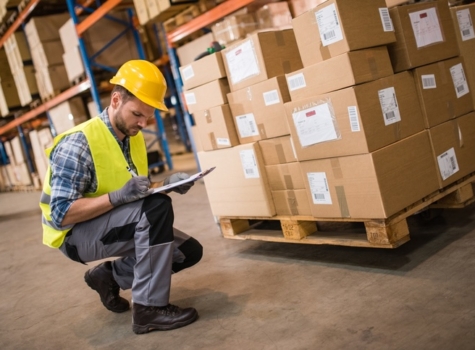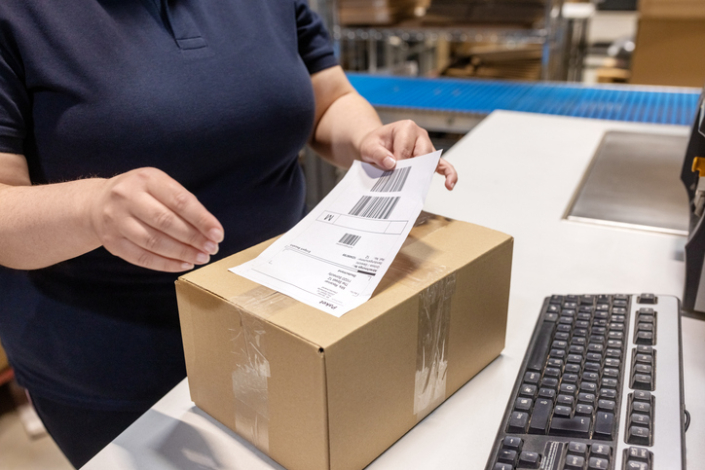Once upon a time, a growing ecommerce business tried to ship everything via parcel. But some boxes were too big, others were too heavy, and a few racked up enough surcharges to make the finance team flinch.
Just like Goldilocks, they faced three options: parcel, LTL, and FTL. To find what was just right, they needed to understand the pros and cons, especially with parcel vs. LTL. This article follows their journey to smarter shipping, and just might help you find your perfect fit too.
Parcel, the lightweight hero
Parcel is the bread and butter of shipping, the default choice for many ecommerce businesses. It’s fast, familiar, and flexible, making it ideal for smaller, individual shipments. But is it always the right choice?
When dimensions start creeping up, or if you’re shipping multiple boxes to the same destination, costs and complexity spike. What once felt simple may no longer be so efficient.
Signs parcel might not be just right
If you’re frequently experiencing any of the following, parcel shipping may not be right for you:
- Bulky but lightweight items are triggering DIM weight charges
- Oversized packages are piling up surcharges way too quickly
- Multiple boxes are going to a single customer or store location
When parcel is right
Parcel is a strong fit if any of the following apply:
- You’re shipping small, lightweight items under 150 lbs
- Speed is critical
- You’re sending orders directly to consumers
- You need end-to-end tracking on every parcel
- You’re managing a high volume of single-package shipments
FTL, the overachiever
When you have a full truckload (FTL) of product headed to a warehouse, store, or distribution center, FTL shipping is the gold standard. It’s generally the right choice for high-volume, long-haul shipments because it minimizes handling and is fast—since it’s going to a single destination.
But like any overachiever, FTL can be too much when the situation doesn’t call for it. If you can’t fill the space or consolidate shipments, it can lead to wasted space, higher spend, and unnecessary complexity.
When FTL is too much
FTL shipping can be overkill when your freight volume, destinations, or timing don’t justify a full truckload.
- Volume doesn’t fill the space
- Orders are spread out regionally, not clustered
- You’re sending smaller replenishment loads
And when it’s right
FTL is ideal when you’re shipping in bulk, on a schedule, and want to minimize stops, hand-offs, and transit time.
- You can fill an entire truckload with product (or get very close)
- You’re shipping more than 10,000 – 15,000 lbs at a time
- Shipments are heading to a single destination
- You want fewer touchpoints and reduced risk of damage
- You need tighter control over pickup and delivery windows
LTL, and when it’s just right
Less-than-truckload (LTL) is the savvy middle child—smart, resourceful, and happy to cooperate. It lets you share space with other shippers so that you pay only for the portion of the trailer you use. It’s perfect for when parcel is too small and FTL is too much.
It’s a cost-effective way to move goods that don’t justify a full truckload but still need more space and structure than parcel allows. LTL keeps things moving without over-committing.
Still, LTL might not be right in some circumstances
LTL has its advantages, but it’s not ideal for every situation—especially when you need to prioritize speed, control, or delicate handling.
- You need speedy, time-definite delivery
- You’re shipping fragile items that can’t withstand multiple transfers
- You can fill a truckload and want tighter control
- You’re sending single, lightweight packages directly to consumers
When it’s right, it’s right
LTL is a great fit when your shipments are too big for parcel, too small for FTL, and you’re looking for flexibility and cost efficiency.
- You regularly ship 150 – 15,000 lbs per order
- You need to ship multiple boxes or large, oddly shaped items
- You want to lower your parcel surcharges without jumping to FTL
- You have delivery windows and some flexibility
- You’re shipping B2B, to distribution centers, or retail locations
You don’t have to go all-in on LTL. In fact, many enterprise shippers benefit most when LTL is used alongside parcel and FTL as part of a blended shipping strategy.
Parcel vs. LTL: What to consider
|
Factor
|
Parcel
|
LTL
|
|
Ideal weight range
|
Up to 150 lbs
|
150 – 15,000 lbs
|
|
Best for
|
Small, individual orders
|
Large, multi-box, or bulk orders
|
|
Speed
|
Fastest (esp. residential)
|
Moderate but predictable
|
|
Cost control
|
Risk of surcharges
|
Pay by space used
|
|
Packaging
|
Compact, small
|
Pallets or large boxes
|
|
Use case
|
Ecommerce B2C
|
Store replenishment, B2B, bulk orders
|
The moral of the story
The best way to ship depends on your circumstances. The smartest strategies use a mix of parcel, LTL, and FTL, choosing the right mode for each shipment based on weight, size, speed, and cost.
If you’ve been overspending on parcel or under-utilizing FTL, now’s the time to find your just right.
EasyPost Enterprise now supports LTL shipping
EasyPost Enterprise makes it simple to manage parcel and LTL shipping from the same powerful platform, giving you more flexibility, better rates, and fewer headaches.
Ready to build your Goldilocks shipping strategy? Talk to a shipping professional today.




